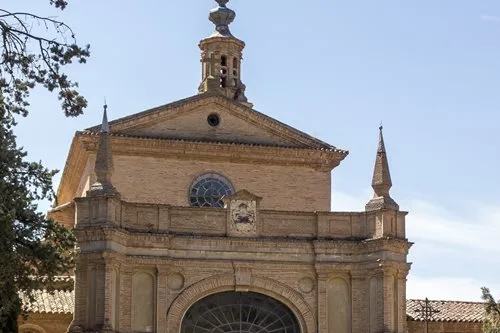
Cookie settings
We use our own and third-party cookies in order to offer our services, display videos, obtain statistics and offer personalized advertising.
For more information, please read our cookies policy.

The construction of the current Basilica is strongly related to the increase of the devotion to the Virgen del Pilar along the XVII Century. The column or pillar where the Virgin appeared to the apostle St James is kept inside. Firstly, a small chapel was built to keep and venerate this column. Later, a Romanesque church was built. After that, a Mudejar Church was built, but this one suffered a fire in 1434 so it was replaced by a Mudejar Gothic temple dedicated to St Mary Major.
Finally, by initiative of Don Juan de Austria, the temple was designed by Felipe Sánchez and Francisco Herrera Hidestrosa in 1681. Later, the King Fernando VI ordered, in 1754, the construction of the Santa Capilla to Ventura Rodríguez, who renovated the interior decoration according to the new Neoclassic currents of the time. He also designed the Santa Capilla and the Coreto and redesigned the exterior design adding domes to the central one – that has been thought to be the only one- and towers that will be finished in the middle of our Century, enlarging their dimensions to 130 m high by 67 m width. The Basilica has 11 domes, 10 lanterns and 4 towers.
The Temple has three naves that are covered by a barrel vault, and they lean on pillars. The central nave is divided by the Major Altar that, at the same time, is dominated by the Major Altarpiece from the XVI Century that was made by Damián Froment, in a Gothic style, and where episodes of the Virgin and our Lord are represented.
Inside, the Basílica is of great beauty and sober grandness. The Santa Capilla, understood as a great shrine in Classicist Baroque style, is a large and quiet Holy place, that was carried out using marbles, bronzes and silvers that are mixed with the sculptural decoration and the painting of its dome. The Virgin, which is 39 cm high, is made of wood and rests on a jasper column.
The choir, a Renaissance work, consists of 130 seats of honour with three levels of stands. Its authors were Esteban de Obray, Juan de Moreto and Nicolás Lobato.
Most of the domes and vaults are decorated with frescoes by famous painters such Ramón and Francisco Bayeu. The chapel Reina de los Mártires (Queen of Martyrs) was decorated by Francisco de Goya, who also painted the vault of the Coreto of the Virgin.
Address and telephone
Opening times
Prices
If you see any mistakes or want to add anything to this information, please contact us.




Book your hotel